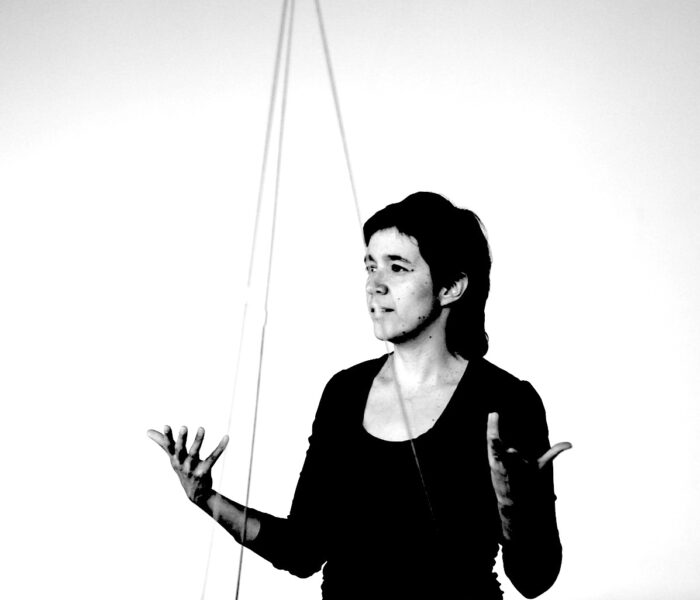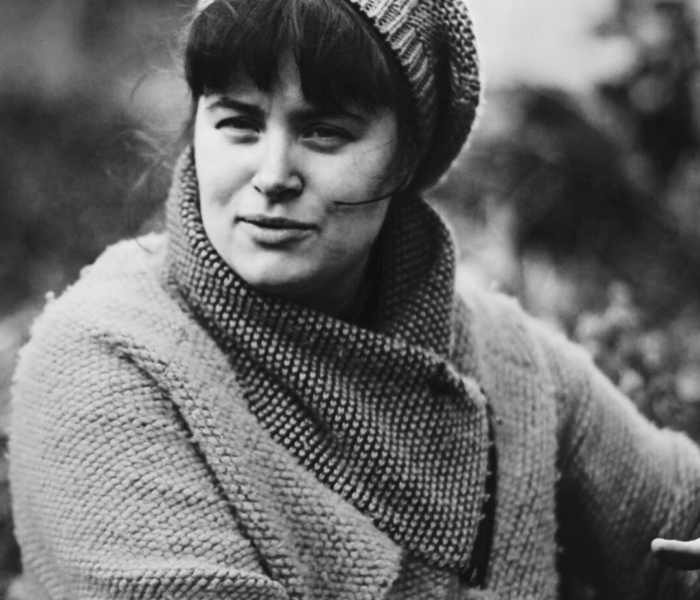Par la parole, par les mots et les récits, Laëtitia Pitz en vient à la musique. La parole sans être du chant, la parole que vient révéler la musique. Cet intervalle surtout, cet appel constant et en constante nécessité de liberté. Laëtitia Pitz est comédienne et metteure en scène. L’entretien eut lieu le 4 mai 2022 à Metz, à son domicile. J’ai préféré ne pas transcrire les questions échangées. Elles ne m’ont pas semblé nécessaires. J’ai préféré laisser sans entrave la dynamique du flux de ses paroles.
Le portrait vidéo de Laëtitia Pitz est le troisième à avoir été tourné. Le second a avoir été monté. Il fait parti d’une série de 12 portraits vidéos. Laëtitia Pitz est comédienne et metteure en scène. Entre livres et cahiers ouverts, «depuis la voix parlée posée sur de la musique », le film nous guide vers la question de la consolation plus que de celle de la consommation.
LAETITIA PITZ from CELINE PIERRE on Vimeo.
Alors, voilà, je te lis un petit mot…
C’est Bram Van Velde, le peintre, qui se promène avec Charles Juliet qui est poète et écrivain, il a fait beaucoup d’entretiens avec des artistes. Notamment, il y a ce livre merveilleux qui s’appelle Rencontre avec Bram Van Velde. Il en a fait également un magnifique avec Samuel Beckett. Voilà, je te lis un passage : “Quand on est dans le travail, on est si loin, dans une telle concentration, qu’après, il est inévitable qu’il y ait une chute, du vide. Après avoir achevée une toile, j’ai chaque fois dû attendre que mes forces se restaurent avant de pouvoir en commencer une autre. Si on considère l’art sérieusement, ce n’est même pas sérieux, quelque part. C’est une histoire pour rire, mais qui fait pleurer, ou inversement. La peinture ne vit que par la glissade vers l’inconnu en soi. Ce n’est pas facile de voir, il faut même un certain courage. On ne l’a pas tout le temps… Ces silences, leur densité, l’effervescence qui les peuplent, le sentiment d’étrangeté qui en est, et ce qui me stimule et m’impressionne, c’est de sentir en Bram Van Velde si intense la présence de l’invisible, de cette chose qui l’habite, et où, à tout moment, il s’immerge, le regard fixe, absent ”. Et, drôle de hasard, ce texte a été écrit, partagé en mai 1972. C’est le mois où je suis née. “Ce monde mécanique nous asphyxie, la peinture c’est la vie. Quelque chose cherche à naître. Je ne sais pas ce que sais. Je ne pars jamais d’un savoir. Il n’y a pas de savoir possible. Le vrai, n’est pas un savoir ”.
Je l’ai donc pris vraiment au hasard. Et la notion du hasard c’est une notion intéressante. J’ai posé ce livre, avec d’autres autour de moi, comme des totems… Il y a de la musique aussi. Pour moi ce sont toutes les présences qui m’aident à vivre, qui nourrissent tout ce que je vais être capable de re-métamorphoser, de re-déployer autrement, de re-étoiler. Et j’avais ce désir de partager ces présences… Oui, je crois que le mot totem, c’est joli.
Tout ce que je mets ensemble
Pour moi, au commencement, il y a toujours la grâce d’une écriture. La question de la langue est prédominante, fondamentale. Comment je suis, à un moment donné, touchée, comment je rentre en approche avec une écriture. Et dans cette histoire de relation, parce que c’est toujours finalement une histoire de lien et de tissage, je suis dans l’espérance que le spectateur soit toujours aussi dans un rapport actif. Que le fait de voir et d’écouter ne soit pas dans un registre de passivité. Qu’il puisse lui-même, à partir de ce qui est proposé, se mettre en acte. Et pour arriver à cet état de création pour le spectateur, je vais commencer à tisser, autour de l’écriture, une approche qui va permettre cette rencontre. Souvent je touche et je travaille avec des aspects immatériels. Il y a déjà, présente, toute la part de la musique. C’est-à-dire, comment la musique va permettre d’entendre les mots autrement, d’une façon différente, d’une façon plus inouïe. Il y a le travail de la lumière, qui va permettre de révéler, aussi, la parole. Donc tout ce que je cherche, tout ce que je mets ensemble dans ce que j’appelle le tissage : la musique, la lumière, le souffle de l’acteur, c’est pour redonner à la parole sa capacité révélante. Révélante dans le sens où le spectateur va lui-même remettre en marche son imaginaire, recomposer quelque chose à partir de ce qui lui est proposé.
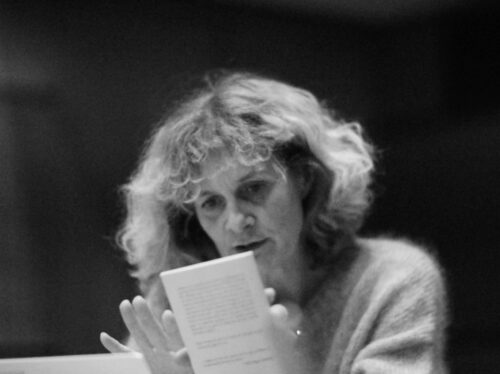
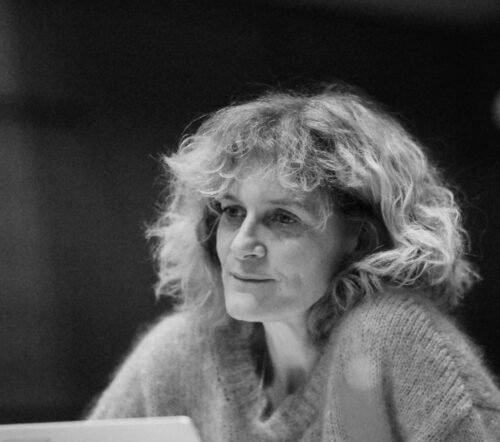
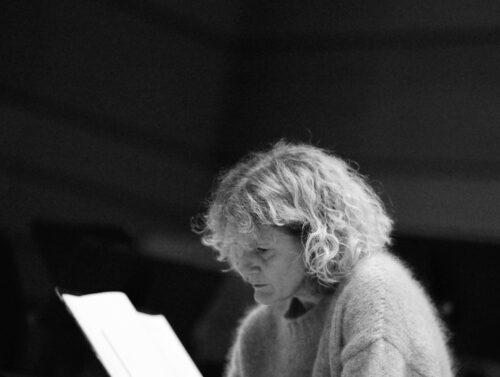
Et l’étoilement…
Le mot qui revient aujourd’hui, beaucoup, c’est “tisser”. Et le deuxième mot, c’est “étoiler”. Dans la question de tisser, il y a donc la notion de relation. Mettre en relation différents éléments, différentes approches, différentes écoutes, différents points de vue, pour re-fabriquer quelque chose qui puisse re-soulever ou re-pétrir l’énigme que révèle une écriture, un langage, ou son potentiel révélant. Et l’étoilement, parce que c’est aussi une forme de mise en relation, qui re-oriente, qui re-injecte un mouvement. Peut-être que le tissage est quelque chose qui va vers l’intérieur et qu’ensuite l’étoilement c’est quelque chose qui fait rejaillir vers l’extérieur. C’est le mouvement du cœur, diastole-systole, c’est le mouvement du souffle. De l’intérieur vers l’extérieur. Et inversement.
Comment je trouve, cette liberté là
Ma première rencontre avec la création a soulevé la prise de conscience très forte, très incarnée, très organique, de voir à quel point la création est un espace qui offre de la liberté. Et là j’en viens au rapport avec le spectateur, c’est bien sûr aussi la création que tu fabriques, en tant qu’artiste, mais aussi en tant qu’écoutant et en tant que personne qui observe le geste de création. Comment cet espace-là te détourne de tout ce que la société t’impose comme habitudes. De voir à quel point cet espace de la création offre de nouvelles possibilités. De nouveaux orients. Fondamentalement. Et cela me permet de sortir de la question de la représentation, de sortir de la question du pouvoir, de la question de tous les espaces qui te contraignent, en fait, dans la vie quotidienne. Je prends conscience de cela très jeune, à l’école – c’est vraiment l’école qui m’amène à découvrir le champ artistique – et je vois à quel point c’est un espace de survie. Un espace autre. Et je remercie du fond de mon cœur les instituteurs qui m’ont permis d’aller vers ces espaces artistiques.
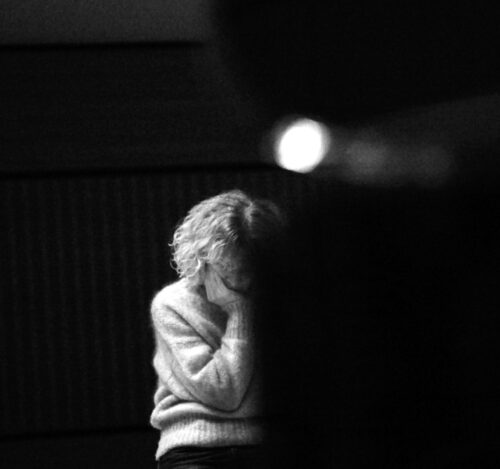

Ensuite je pense qu’il y a toujours eu la volupté des histoires. J’ai toujours aimé qu’on me raconte des histoires. Je pense que le passage du jour à la nuit a toujours été un espace compliqué, pour moi. Il y a ce petit moment entre le jour et la nuit où on te raconte une histoire pour que ça t’aide à passer vers le noir et le silence. Il y a quelque chose de merveilleux dans le fait de pouvoir raconter des histoires. Il y a d’ailleurs un très joli livre de Vinciane Despret et Isabelle Stenglers, qui s’appelle Les faiseuses d’histoires. Elles évoquent les temps anciens, archaïques, où les femmes, dans l’attente des hommes partis chassés ou chercher un nouveau territoire pour installer le campement, les femmes, pour apaiser ce moment d’attente, de la peur, racontaient des histoires.
Et les histoires m’amènent au théâtre.
Je viens aussi de cette région, la région Grand Est, et j’ai eu la chance de rencontrer Dominique Repecaud qui était directeur du Centre Culturel André Malraux à Vandoeuvre-Les-Nancy, et de découvrir tout ce qu’il a réuni, rassemblé, invité. Je découvre le festival Musique action et la musique improvisée et là c’est un deuxième grand choc de voir la liberté, fondamentale, de ces musiciens et musiciennes. Une vraie bifurcation dans mon travail, qui va m’amener ensuite à rencontrer des personnalités théâtrales qui sont aller vers la question du silence, la question de la musique de la langue. Je pense au travail d’Henri Meschonnic, de Claude Régy, de Hans Michael Grüber. Il y a ce moment charnière où tout d’en coup je pose mes oreilles sur des choses qui me retournent le cerveau, parce que je ne comprends pas comment c’est fait, je ne sais pas d’où ça vient, c’est complètement inouï que ce ne soit pas écrit. C’est-à-dire que ce soit une musique qui est en train de se faire dans l’instant, dans le moment présent, qui est en train de se fabriquer fondamentalement avec moi, qui suis là à écouter. Ce qui a bouleversé ma façon de travailler, c’est que j’essaie, maintenant, de manière obsessionnelle, comment, dans mon travail avec l’acteur, dans mon travail de ré-appropriation de ces langues étrangères que sont les textes autour desquels je tourne, comment je trouve, cette liberté-là. Vivante. Empuissantante.
Ce n’est pas facile de parler de soi. De ce qu’on fait. De comment on le fait…
La parole, c’est ce qui nous lie. Nous relie. Et je crois que ce qui est troublant avec la parole et que souvent les grandes écritures théâtrales révèlent, par le truchement du plateau, de la mise en scène, c’est au combien la parole énoncée porte en elle un paradoxe, une antinomie, une chose qui n’est pas dite, un non-dit, un malentendu. Mal-entendu. Peut-être que toute relation est basée sur un mal-entendu. Étudier cela est fascinant.
Alors comment, avec mes outils, je suis en capacité de révéler cet endroit paradoxal de la parole, toute l’invisibilité inconsciente que porte cette parole. D’où, aussi, mon attirance pour la musique dans son attachement au langage. Dans la mesure où la musique va permettre, à mon sens, de déposer la parole d’une certaine façon dans l’oreille. La musique permet d’entendre la langue autrement. Peut-être que la grande magie, la grande spiritualité, le grand chaos de la musique, c’est de permettre, quand il côtoie le langage, de déplacer une perception et d’ouvrir une nouvelle voie chez celui qui écoute. Une perception qui va mettre en acte son imaginaire. Et ainsi aller chercher ces zones de troubles, ces zones non dites. Des zones plus inouïes au sens du non-entendu, du non-audible encore. Comment la voix parlée posée sur de la musique vient déplacer les lignes d’attention, fondamentalement. Créer un écart.
Ce n’est pas une question de mélanger ou d’amalgamer la musique et le texte. Quand je travaille avec un compositeur, c’est toujours deux espaces très séparés. Mais c’est un séparé, ensemble. C’est-à-dire qu’il y a la ligne du texte et il y a la ligne de la musique. Et c’est comment, leur côtoiement — j’aime ce mot côtoiement, révélé par Jean Christophe Bailly dans un petit livre sur la question du regard à l’animalité , comment l’humain et l’animal sauvage, dans ces rares moments de côtoiement, au détour d’une route quand les phares de voiture se posent sur un cerf qui se dresse sur le bord de la route —, comment cette rencontre crée tout d’un coup un vertige. Pour moi c’est ce qui advient quand se côtoie vraiment la musique et la voix parlée.
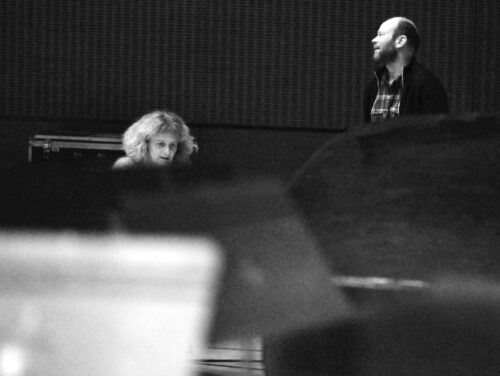
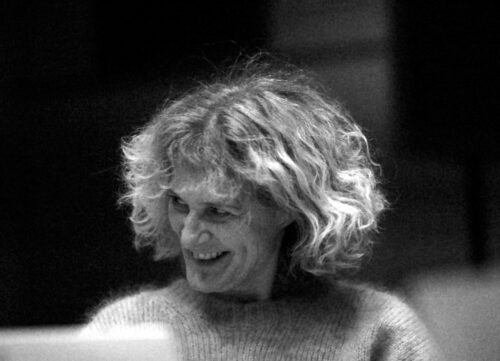

Propos recueillis par Céline Pierre un 4 mai 2022 à Metz.
Photos © Céline Pierre



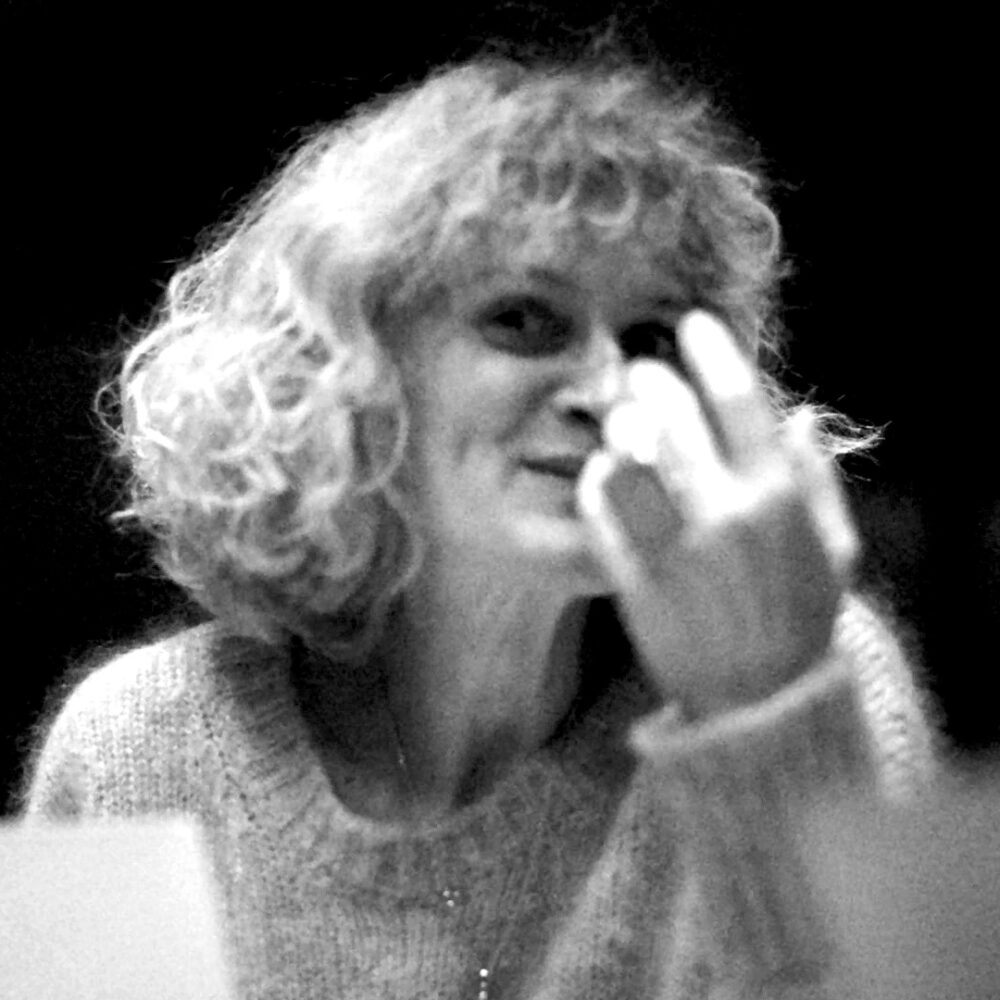)
